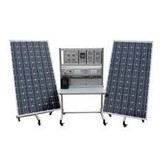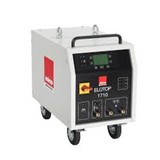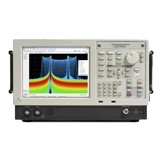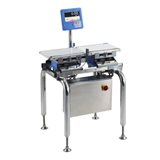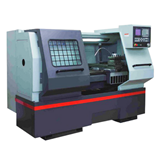By 2020 Australia must generate 50 per cent more clean energy to support the 7 million new jobs and $350 billion in industrial output that will sustain national economic growth. Anything less, and the economy will falter.
Yet the sheer volume of new energy required is only part of the challenge. It has to be priced at levels that keep the nation's exports globally competitive. It must keep transport wheels spinning as local oil reserves dry up. And it has to meet toughening world and trading partner expectations on emissions.
Dr John Wright, head of CSIRO's Energy Transformed (ET) national flagship program initiative, is convinced the answer is to transform Australia's energy sector, taking the nation down the road to what could become one of the world's first hydrogen economies.
Hydrogen is not only the cleanest energy source available - it can also be obtained from both fossil and renewable sources, and used both to generate electricity and to power transport. It is, Dr Wright considers, the logical route for the nation to take in the C21st.
Arguably the most ambitious energy research undertaking in our history, ET aims to position Australia as a world leader in clean, cost-efficient, reliable and secure energy from the rich endowment of resources available to us.
"We want to transform the way energy is converted and used," Dr Wright explains. "We're also out to develop a world lead in eliminating greenhouse emissions."
The United States has recently acknowledged its enormous vulnerability to global disruption in oil supplies - especially from the Middle East. The Bush Administration has responded to the challenge with a $A1.8 billion investment in research and development to develop hydrogen as the basic energy carrier for US industry and transport.
For the sake of our competitive position as a trading nation and a seller of energy-intensive products, Australia cannot afford to be left on the starting blocks with an outdated, costly and polluting energy system, Dr Wright warns.
"Our ET research program is clearly smaller in scale than that of the US. But it is also based on a wide range of energy options, and is highly focussed," he says. "Furthermore it is based on a very wide network of partnerships across the nation's energy industry, governments and research bodies. This gives us the necessary scale to come up with the big technological advances."
With the US, Australia shares an unenvied reputation as one of the world's worst greenhouse polluters, whether measured per citizen or per dollar of GDP. Supporting the average Australian produces 28 tonnes of greenhouse gas, compared with 21 tonnes for the average American. As more countries take action to counter emissions, the risk of a trade backlash grows.
Through a web of innovative technologies and careful planning Dr Wright considers it quite feasible to convert our status from global pariah to greenhouse hero and eliminate greenhouse emissions without missing an economic beat. We can even make money from the new technologies, into the bargain.
According to Dr Wright and the ET team, the answer lies in combining energy systems and sources to take optimum advantage of Australia's rich natural endowment of energy in the smartest way. This includes:
1. Developing and implementing technologies leading to zero emissions power from fossil fuels and eventually, large scale hydrogen generation
2. Developing cost-effective electricity and hydrogen from renewable sources
3. Increasing the fuel and traffic management efficiency of urban transport, paving the way for a transition to hydrogen powered vehicles
doubling the efficiency of fuel (natural gas and eventually hydrogen) use by the generation of power/heat/ cooling at point-of-use (distributed energy) applications.
4. Australia has already decided against two potential forms of energy - nuclear power and more large scale hydroelectric power - while domestic oil reserves are likely to dwindle to less than half our needs within a decade. However when it comes to raw energy resources we are still spoiled for choice, with centuries' worth of coal, natural gas, hot rock geothermal power, wind, tide, wave, biomass and solar options to select among. All of these forms of energy are capable of being converted to hydrogen which can then be burned in power stations, workplaces or vehicles.
Energy Transformed recognises the reality that coal-fired electricity will still be the backbone of Australia's static power supply for the coming 20 years and probably beyond. "Nothing else is coming on-stream fast or competitively enough to replace it in time to supply our future energy needs. So the real issue is: can we provide that energy more cleanly, reliably and at competitive prices?" Dr Wright asks.
"The answer is: yes. We can take coal-fired generation down a path of progressively cleaner, better technologies that will up efficiency from an average 33 to 50 per cent.
"Currently, coal-fired electricity produces a third of our national emissions. Using advanced Clean Coal technologies we believe we can progressively eliminate these emissions by sequestering them," he explains.
The plan involves progressively replacing Australia's ageing coal-fired power stations with IGCC (integrated gasification combined cycle) systems. These gasify coal, converting it to synthesis gas, a mixture of carbon monoxide and hydrogen. The synthesis gas is then "water shifted" to convert the carbon monoxide to more hydrogen and carbon dioxide. These two gases are then separated - the hydrogen being burnt in a gas turbine or fuel cells to make electricity, and the pure CO2 sequestered.
Sequestration involves separating the carbon dioxide and re-injecting it underground into un-minable coal seams, saline aquifers and depleted oil or gas fields. The flagship program, together with its partners, will determine the technical and economic feasibility of the various options.
A vital option - given Australia's dwindling oil reserves - is to convert some of the synthesis gas from coal gasification into liquid fuels for transport, in what is known as a polygeneration plant.
Transport will account for about 38 per cent of Australia's total energy consumption in 2020 and, here too, the ET researchers are seeking to transform Australian attitudes as well as our technologies. Based on CSIRO's previous experience in helping to build the ECOmmodore and aXcess Australia hybrid cars, the goal is to develop highly fuel-efficient, ultra-low-emission vehicles that will one day run on hydrogen alone.
Part of this research is to move from today's purely mechanical drive-trains to electro-mechanical drives to propel vehicles, and to progressively introduce hybrid gas/electric motors and, ultimately, fuel cells providing pure electrical power. These fuel cells will run on natural gas and, eventually, pure hydrogen. Their only emissions will be water vapour, opening the way for clean skies and healthy air over Australia's great cities.
Advanced vehicles require advanced traffic systems, and a major focus of the project will be to explore better design and management of traffic and freight flows in cities and around Australia, Dr Wright says.
Hanging like an albatross over our transport future is the dwindling indigenous supply of oil, forecast to plummet to about 40 per cent of self-sufficiency in the 2010s. The nation will then have to choose between paying an extra $7 billion a year for insecure oil imports - or moving to alternative transport fuels. These include natural gas-to-liquid fuel, syngas-to-liquids and hydrogen gas for combustion or direct electricity generation. One of the goals of the ET program is to identify the nation's optimal choices among the various alternatives and to conduct research into improved transport fuel conversion technologies, particularly clean fuels from synthesis gas.
Dr Wright emphasises that the ET project will do more than research and test new ways to generate and use energy: it will also form the core of a billion dollar knowledge-based industry export cluster. As Australians develop new, clean efficient technologies, they can export them to a world hungry for better energy choices.
"Growing concern about atmospheric pollution and emissions, especially in the northern hemisphere and in developing countries like China and India, is focussing world attention on the need for clean, efficient technologies," Dr Wright says.
"In solving Australia's problems, we will also be developing a wide array of highly competitive technologies and services we can market overseas.
"Because of our unique mix of energy choices - gas, coal, oil, oil shale, hot rock, solar, wind, biomass and so on - Australia is ideally positioned to help other countries develop tailored solutions to their energy problems which best combine the energy sources available to them. But first we have to demonstrate those solutions here.
"With this as our natural advantage, I'm confident we can build a large export industry in energy know-how and technology, just like the $5 billion industry we have build in vehicle components in the last 10 years," Dr Wright says.
"Energy has long been thought of as Australia's environmental Achilles heel. I'm convinced that, with the right mix of technologies, it will set a course for our future prosperity and sustainability as a society."

